|
|
ADDRESS AND INTERACTION WITH THE STUDENTS AND FACULTY MEMBERS OF JAWAHARLAL NEHRU UNIVERSITY, NEW DELHI
12-01-2005 : New Delhi
"The evolution of enlightened citizen centric society"
I am indeed delighted to participate in the interaction meet with the students, faculty and staff of Jawaharlal Nehru University (JNU), New Delhi. I greet the students and congratulate the faculty and staff members of JNU for shaping the young minds. I always cherish interaction with the students and faculties in the school and university environment. When I am with you, I would like to discuss with you "The evolution of enlightened citizen centric society".
Our Challenges in the Planet Earth
There are many challenges in our planet earth of six billion people. There is shortage of water, increased atmospheric pollution leading to many diseases, depleting fossil materials and other natural resources, depletion of available land for agriculture and lack of availability of uniform opportunity to all citizens. Many nations are experiencing the problems of injected terrorism. The young people of the planet are dreaming to live in the land of opportunities and happiness. We have also seen that the economic prosperity of few nations alone has not brought lasting peace to the world. No single nation will be able to handle the situation by itself. Humanity will require mega missions for harnessing solar energy, drinking water from sea water through desalination process and bringing minerals from other planets and also to bring space manufactured products. In such a situation, the present reasons for conflict between nation to nation will become insignificant and unwarranted. India can play a major role in developing a new model of enlightened citizen centric society which will provide prosperity, peace and happiness to all the nations in the world. Let me discuss the model.
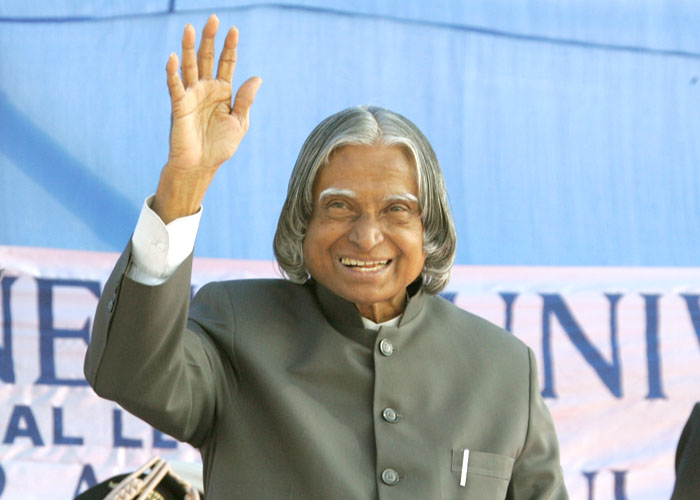

Evolution of Enlightened citizens
The evolution of enlightened human beings is indeed a big challenge for the world community. There are three components to that. The first component is education with value system, second is religions graduating into spiritual forces to bring universal brotherhood and the third is poverty eradication by attaining economic prosperity through a national vision.

Education with Value System
The best part for a person is his or her learning period in educational institution. The prime learning period is 5th to 17th year of age. Hence, the curriculum period is the best time for learning, and need the best environment and mission oriented learning with value based educational system. The teacher who loves teaching is an important asset. This reminds me the echo from Bestolozzy, a great teacher's saying, "Give me a child for seven years, afterwards, let the God or devil take the child, they cannot change the child." That is indeed the power of the teacher. For parents and teachers, educational campus and home have to have an integrated mission: education with value system. Fifteen-year value-based education of 30,000 hours in the educational campus is essential to establish an open and transparent society or a society with integrity. Up to the age of 17 years, the father, the mother and the teacher lead a child embedded with value based education.
The Nations will target development milestones in a dynamic environment instead of spending tremendous energy and time in problems initiated by small aims. This is the essential environment needed for transforming India into a developed nation.
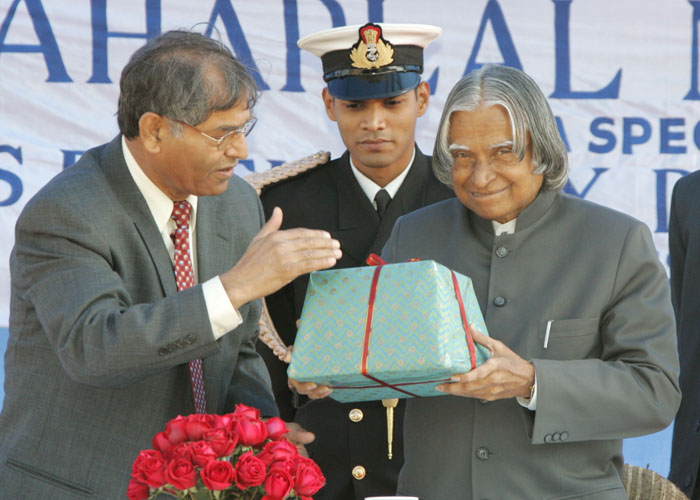

Transforming India into a Developed Nation
Our nation is going through a major challenge of uplifting of 260 million people who are below the poverty line. They need habitat, they need food, they need health care, and they need education and employment and finally resulting into a good life. That means transforming into a Developed Nation. Our GDP is growing at more than 6% per annum. Whereas, the economists suggest that to uplift the people below poverty line, our economy has to grow at the rate of 10% per annum consistently, for over a decade. How do we achieve this mission?
Integrated action: To meet the need of one billion people, we have identified five areas where India has core competence for integrated action:
(1) Agriculture and food processing
(2) Education and Healthcare
(3) Reliable and Quality Electric power, Surface transport and Infrastructure for all parts of the country.
(4) Information and Communication Technology and
(5) self reliance in Strategic sectors.
These five areas are closely inter-related and if well done would lead to national, food and economic security, and national security. One of the important components of national development is PURA (Providing Urban Amenities in Rural Areas) which will eliminate the rural-urban divide. This model can be followed by the other nations also.
The Mission of PURA: The number of PURA units for the whole country is estimated to be 7000. This envisages integrated connectivities to bring prosperity to rural India. These are - physical connectivity of the village clusters through quality roads and transport; electronic connectivity through tele-communication with high bandwidth fiber optic cables reaching the rural areas from urban cities and through Internet kiosks; and knowledge connectivity through education, vocational training for farmers, artisans and craftsmen and entrepreneurship programmes. These three connectivities will lead to economic connectivity through starting of enterprises with the help of banks, micro credits and marketing of the products.
Each PURA cluster will connect about 20-30 villages depending upon the region and population and will cost about Rs.100 crores. This is a viable and sustainable business proposition. After initial short-term employment during construction etc., we have to plan for initiating actions for providing regular employment and self employment opportunities in nationally competitive small enterprises in agro processing, manufacturing and services sectors for about 3000 people or more. If the industrial/business parks are marketed well, they can generate employment opportunities in support and services sector for about 10,000 people or more. This will provide sustainable economy for the rural sector. In this national mission, bankers can promote entrepreneurship in the rural areas. This will lead to the removal of urban-rural divide. It will also help to ease out the growing slums in cities by making rural areas attractive habitats.
PURA as an Enterprise: A large number of banks have entrepreneurial development programmes. Banks have also been funding Small Scale Industries of different types in various regions. The small scale industrialist is a promising candidate for becoming the chief executive for managing the PURA complexes in an integrated way. PURA enterprises can also undertake management of schools, health care units, vocational training centres, chilling plants, silos and building a market, banking system and the regional business or industrial units. A new mission mode management style has to emerge for PURA enterprises. It should not be looking for protective legislations to support them. Rather they should be efficient to compete with others. This new PURA enterprise needs partnership from the bank, from the Government and also from the private entrepreneurs. Banks can train the entrepreneur for managing the PURA in their training centres and also provide them loans for creating and running PURAs as a business proposition. I would like to give a PURA model which is in operation at Vallam in Thanjavur.
Periyar PURA: Recently I had visited Periyar Maniammai College of technology for women and inaugurated a PURA Complex. I thought of sharing with you the developmental concept of a cluster of over 60 villages near Vallam, Thanjavur district of Tamilnadu which involves a population of 3 lakhs. This PURA complex has all the three connectivities - physical, electronic and knowledge - leading to economic connectivity. The centre of activity emanates from the women engineering college that provides the electronic and knowledge connectivity. Periyar PURA has health care centres, primary to post graduate level education and vocational training centres. This has resulted in large scale employment generation and creation of number of entrepreneurs with the active support of 850 self-help groups. Two hundred acres of waste land has been developed into a cultivable land with innovative water management schemes such as contour ponds and water sheds for storing and irrigating the fields. All the villagers are busy in either cultivation, planting Jatropha, herbal and medicinal plants, power generation using bio-mass, food processing and above all running marketing centres. This model has emanated independent of any government initiative. The committed leadership has been provided by the Engineering institution. This gives me the confidence that PURA is a realizable proposition and this movement can be multiplied by thousands of entrepreneurs, educational administrators and philanthropic institutions with the support of the government agencies.
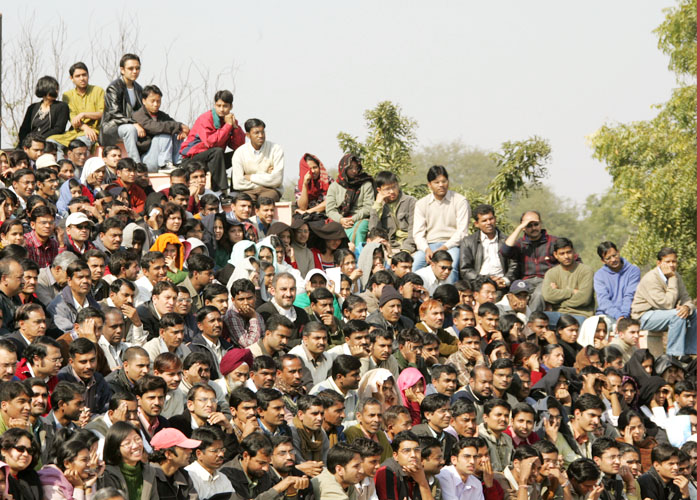

Religion transforming into spirituality
A message, I have received is that most Indians experienced and old, energetic and middle-aged, young and innocent, they all look to religion for solace and safety. I have also visited great many religious places and houses of worship throughout the length and breadth of this great country and I have met many of our religious leaders. The religions are like exquisite gardens, places full of surpassing beauty and tranquility, like sacred groves filled with beautiful birds and their melodious songs. I truly think that religions are beautiful gardens. They are enchanting islands, veritable oasis for the soul and the spirit. But they are islands nevertheless. How can we connect them so that the fragrance engulfs the whole universe? If we can connect all the islands with love and compassion, in a 'garland', we will have a prosperous India and prosperous world. Let me highlight how the fusion of science and religion led to the transformation of religion into spiritual force.
I would like to recall an incident which happened four decades ago. As you all know, Prof Vikram Sarabhai is the visionary of space programme in the country. He is well known for his cosmic ray research area that led to evolving the space research programme for the nation. Both Dr Homi Bhabha and Prof Vikram Sarabhai were looking for a site to establish space research station in the equatorial region. These two great scientists visited a number of places. Thumba in Kerala was selected by the scientific community for space research as it was near the equatorial region and was ideally suited for ionospheric research in upper atmosphere apart from study of atmospheric structure. When Prof Vikram Sarabhai visited Thumba, the locality had series of villages and thousands of fishermen folk were living in that area. It also had a beautiful ancient church, St Mary Magdalene Church, Pallithura and a Bishop's House. Prof Vikram Sarabhai met many politicians and bureaucrats to get the place for the work of space science research. It did not move further because the nature of the place. He was asked to see the Bishop of Trivandrum, at that time in 1962, His Excellency Rct Rev Dr Peter Bernard Pereira. It was a Saturday when Prof Vikram Sarabhai met the Bishop. The Bishop smiled and asked him to meet him the next day, ie Sunday. In the morning Service, the Bishop told the congregation, "my children, I have a famous scientist with me who wants our church and the place I live for the work of space science research. Dear children, science seeks truth by reasoning. In one way, science and spiritualism seek the same divine blessings for doing good for the people. My children, can we give the God's abode for a scientific mission?" There was a chorus of 'Amen' from the congregation and the whole church reverberated. Subsequently, the big event took place in 1962. His Excellency Rct Rev Dr Peter Bernard Pereira, the Bishop of Trivandrum, took the noble decision to dedicate the church in recognition of the national goal for the establishment of the Indian Space Research Organisation at Pallithura, Thumba. That was the church where we had our design centre, started rocket assembly, design of filament winding machine for FRP product and the Bishop's house was our scientists' place. Later, the Thumba Equatorial Rocket Launching Station (TERLS) led to the establishment of Vikram Sarabhai Space Centre (VSSC) and multiple space centres throughout the country.
When I think of this event, I can see how enlightened spiritual and scientific leaders, all converge towards giving reverence to the human life. New church and new schools were established in record time. Of course the birth of TERLS and then VSSC gave the country the capability of design, development and produce world class huge rocket system and subsequently, India has the capability of launching geo-synchronous, sun-synchronous and meteorology spacecraft, communication satellite, remote sensing satellite thereby provided fast communication, weather forecasting and also locate water resources for the country. Today, among us, Prof Vikram Sarabhai is not there, Rev Dr Peter Bernard Pereira is not there, but those who are responsible for creation and make the flower and blossom will themselves be a different kind of a flower as described in the Bhagwat Gita: "See the flower, how generously it distributes perfume and honey. It gives to all, gives freely of its love. When its work is done, it falls away quietly. Try to be like the flower, unassuming despite all its qualities". What a beautiful message for all generation of this nation, on integration of minds and universal mind.
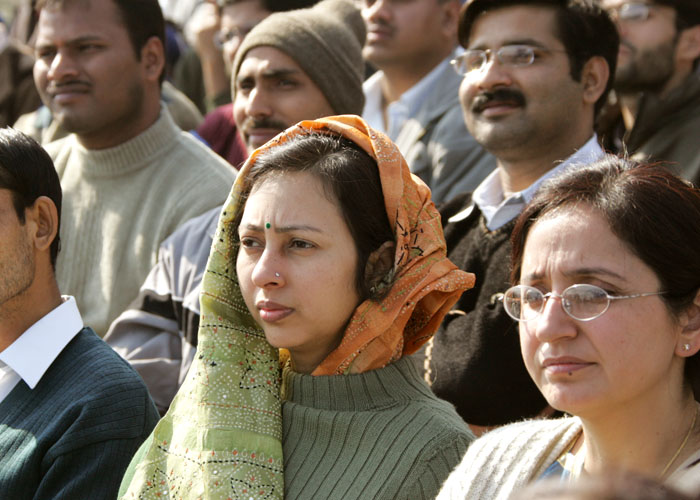

Enlightened citizen centric society
As you all know, the United Nations was established in 1945 after the Second World War with the mission of bringing peace among nations and resolving conflicts as they arise so that war will not be waged between nation to nation. What the world has witnessed today is that two major unilateral wars have taken place in spite of the United Nations. Hence, we need a world body which can facilitate bringing peace, prosperity and knowledge to the nations, irrespective of the economic status of a particular nation. Indeed the vision of the new world body has to be facilitating the evolution of enlightened citizen in the planet.
Friends, I have discussed so far the evolution of enlightened citizen with its dimensions of education with value system, national development and religion transforming into spirituality. Since this JNU is a place of intellectuals with economic and societal concern, I put forth these thoughts for your discussion. Definitely, you can get in touch with me through my website .
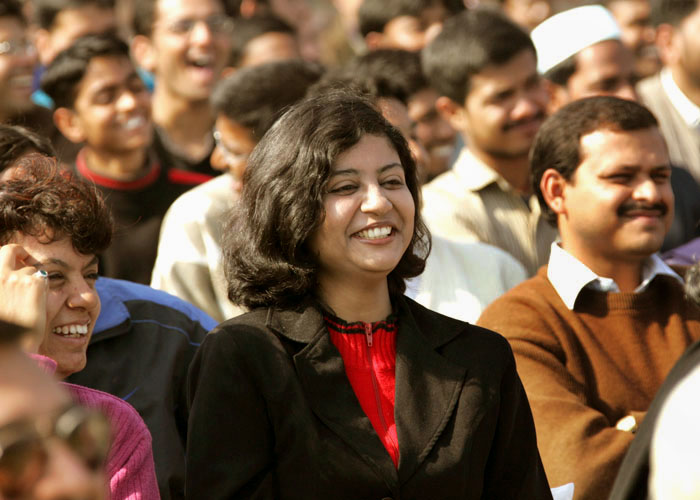

Conclusion: Modern Nalanda
Now I would like to recall an incident, which happened during one of my visits after becoming the President. During my tour to the State of Bihar, among other programmes I visited various spiritual places, Bodh Gaya, and the famous Nalanda University. I walked through the monument and I saw a big hostel, a beautiful study hall of Buddhist philosophy and the college where teachers and students from nearly 63 countries used to study in theology, religion and spiritualism.
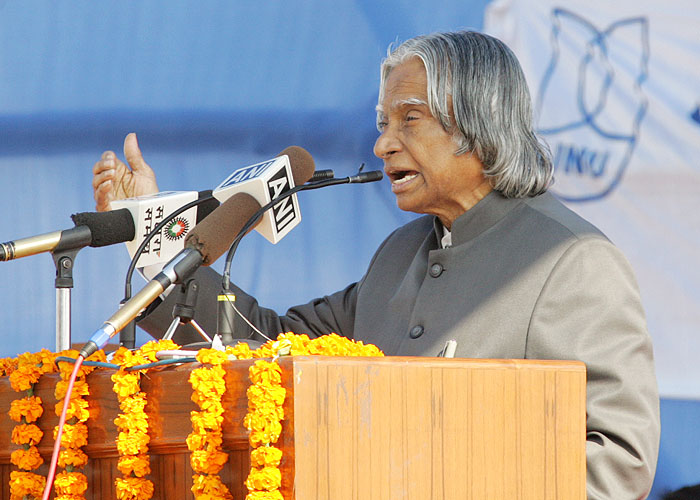
Why it happened in this country in the 5th century AD? Our civilizational heritage attracted students from various parts of the world. Similarly time has come an institution like JNU has become a place of learning and research in attracting students from many part of the world. Great teachers of the university attract the best students. JNU can have a vision of becoming a modern Nalanda.
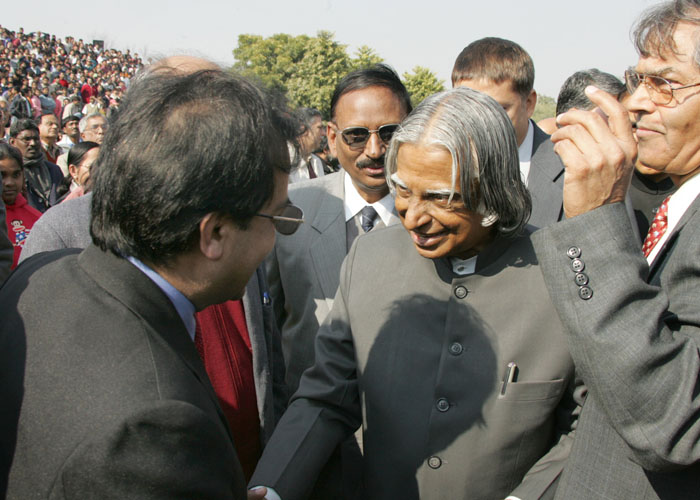
Every one of us has gone through the various phases of education from childhood to profession. A scene appears in front of me. When the child is empowered by the parents, at various phases of growth, the child transforms into a responsible citizen. When the teacher is empowered with knowledge and experience, good young human beings with value systems take shape. When individual or a team is empowered with technology, transformation to higher potential for achievement is assured. When the leader of any institution empowers his or her people, leaders are born who can change the nation in multiple areas. When the women are empowered, society with stability gets assured. When the political leaders of the nation empower the people through visionary policies, the prosperity of the nation is certain. The medium for transformation to developed India is the empowerment at various levels with power of knowledge of the enlightened citizens.
My best wishes to all of you in your creative educational mission.
May God bless you.
<<Back
|
|